
If you are going to Paris and visiting the Louvre, having a solid plan is a must! And if you are traveling with (sometimes) grumpy teens, it’s even more important. The Louvre is one of the largest art museums in the world. It contains over 380,000 works of art. You absolutely can’t see everything, but follow this plan and you can see all of the must-see masterpieces in about two hours.
Note: We may earn a small commission from the affiliate links below.

Prepping for Your Louvre Visit
Be Picky about Dates & Times
The first step of your Louvre plan is to figure out when to go. The Louvre is extremely busy, so try to go at times when there are less crowds. Weekends are always busy. The museum is not open on Tuesdays. So try to visit on a Monday, Wednesday, or Thursday if possible. Regardless of what day you visit, either get there early or late. Book the first time slot at 9 a.m. and arrive to the entrance about 8:30 a.m. This should allow you to be first in line and see the most famous artworks without the throngs of crowds hovering about.
But if you are like me and miss out on those early morning time slots by booking too late, plan to visit the Louvre later in the day. Usually the Louvre closes at 6 p.m., so go at 3 p.m. on those days. Currently, the museum is open until 9:45 p.m. on Fridays. So arrive around 5 or 6 p.m. on a day the Louvre closes late. If you are visiting with teens, the 6 p.m. timeslot on a Friday is perfect!
One caveat. It’s free to enter the Louvre the first Friday of each month after 6 p.m. except in July and August, and on July 14. But the crowds are overwhelming, so I recommend going on a different day and paying for tickets. After all, you only pay for adults. Kids under the age of 18 are free anyway!
Purchase Tickets in Advance
Ticket lines at the Louvre on the day of your visit can be 30 minutes to two hours long. Avoid this by purchasing tickets in advance. You will still wait in a line for security, but at least you skip one line by purchasing tickets in advance!
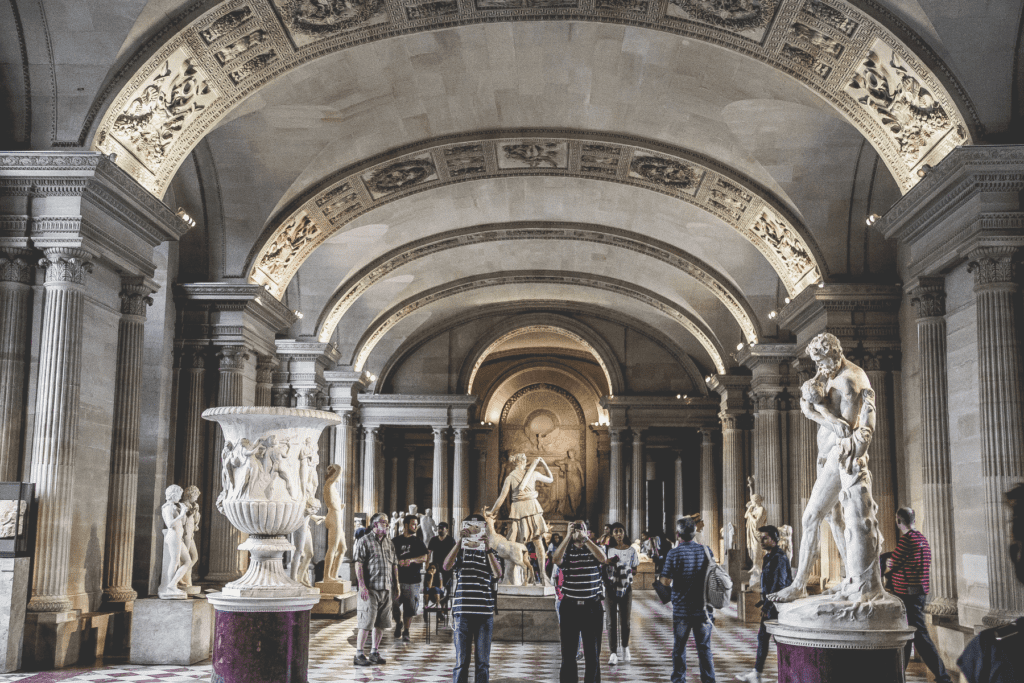
Must-Sees at the Louvre
Lore says that it would take 100 days if you spent 30 seconds looking at each piece of art the Louvre holds. But here are the things you absolutely should see in the Louvre:
Denon Wing
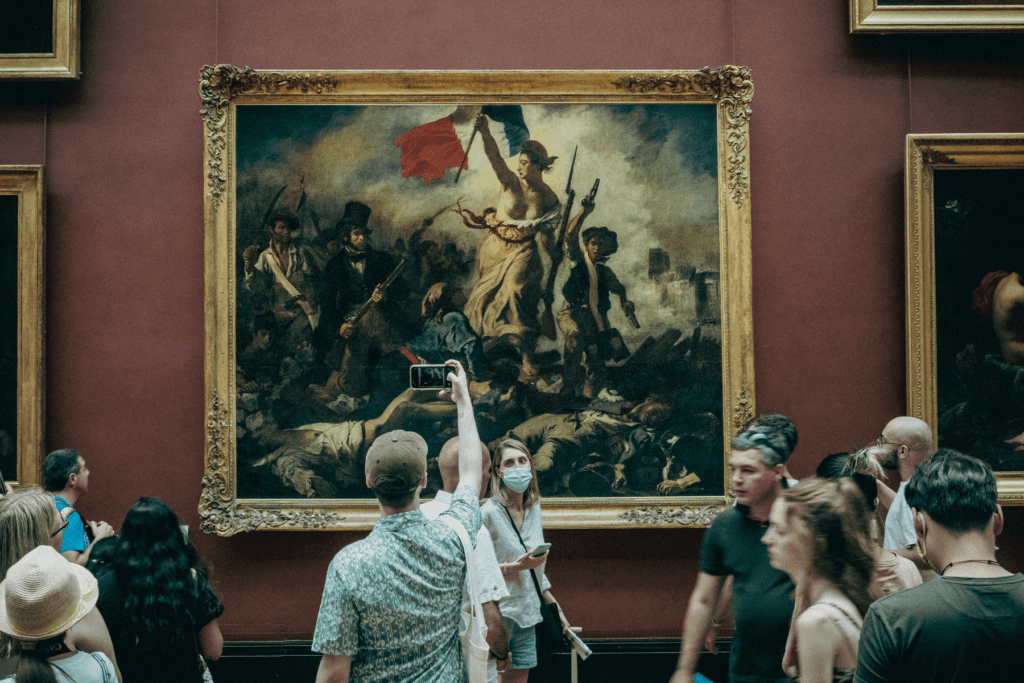
Liberty Leading the People
This 1830 painting by Eugene Delacroix captures a pivotal moment in French history when the July Revolution resulted in the overthrow of the Bourbon monarchy and the ascent of King Louis-Phillipe. It symbolizes the ideals of liberty, equality and fraternity that create the French national identity. Delacroix is a master of the Romantic school of French painting. It is located in the Denon Wing, Level 1, Room 700.
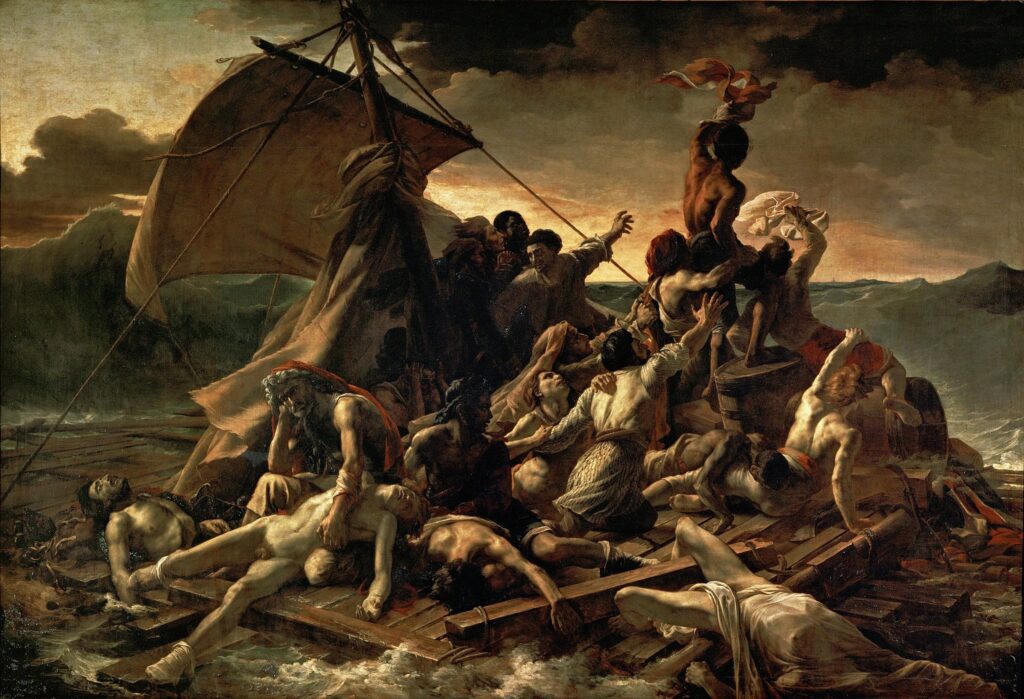
Raft of the Medusa
Located in the same room as Liberty Leading the People, the Raft of Medusa is another French Romantic painting. This one was painted in 1819 by Théodore Géricault. This painting depicts the French naval ship Méduse which wrecked off the coast of Senegal in 1816. It serves as a critique of the French government and was a symbol of protest against the Bourbon monarchy.

Coronation of Napoléon
This huge iconic painting is by Jacques-Louis David in 1807. It shows the coronation of Napoléon Bonaparte as Emperor of the French on December 2, 1804, at the Notre-Dame Cathedral in Paris. The painting is significant for capturing a historic moment that most of the world is familiar with as well as containing a host of historical characters like Napoléon, Josephine, Pope Pius VII, and members of the French aristocracy. This painting is located in Denon Wing, Level 1, Room 702.

Winged Victory of Samothrace
This ancient Greek sculpture depicts Nike, the Greek goddess of victory, and dates from the 2nd century BC. She is standing on a bow of a ship with her wings outstretched in the midst of descending from the heavens. Her missing arms and head have not been found. The sculpture is by an unknown artist and was found in 1863 on the island of Samothrace in the northern Aegean Sea. It is one of the greatest works of Hellenistic sculpture. This statue is on the Daru stairs in the Denon Wing so you can see it from multiple levels.
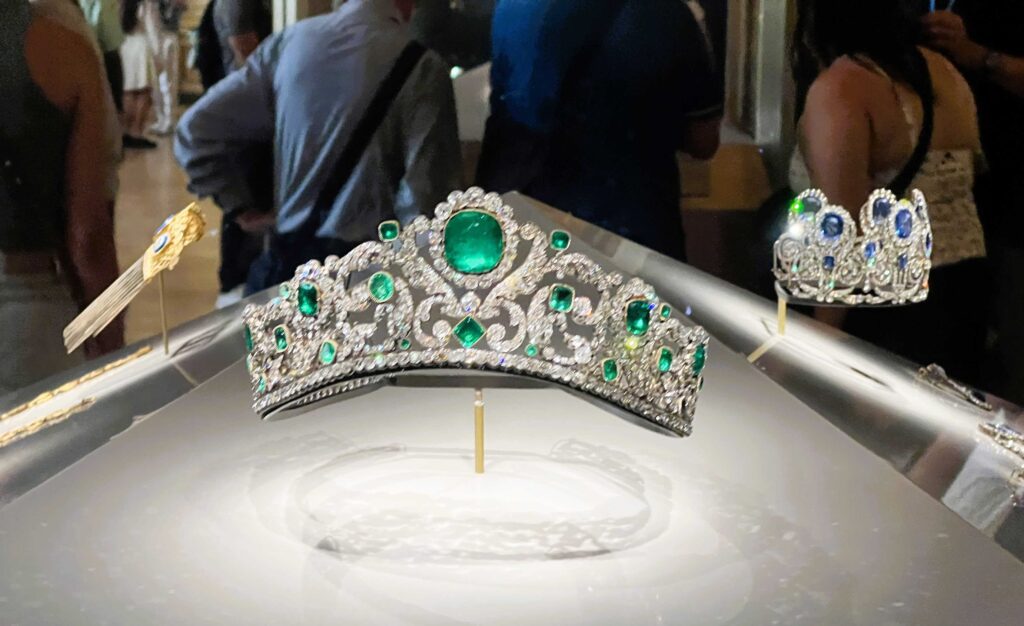
Crown Jewels of France & Apollo Gallery
Most of France’s crown jewels were stolen, lost or destroyed during the French Revolution in the late 18th century. But the Louvre contains a collection of replicas as well as some actual pieces from the collection. Look specifically for the ‘Côte de Bretagne’ spinel, the emerald and diamond jewelry set, and three diamonds called the Regent, the Sancy, and the Hortensia. These are the real deal! Perhaps more impressive than the jewels themselves is the jaw dropping room they are in. The Apollo Gallery is located in Denon Wing, Level 1, Room 705, and was commissioned by King Louis XIV.
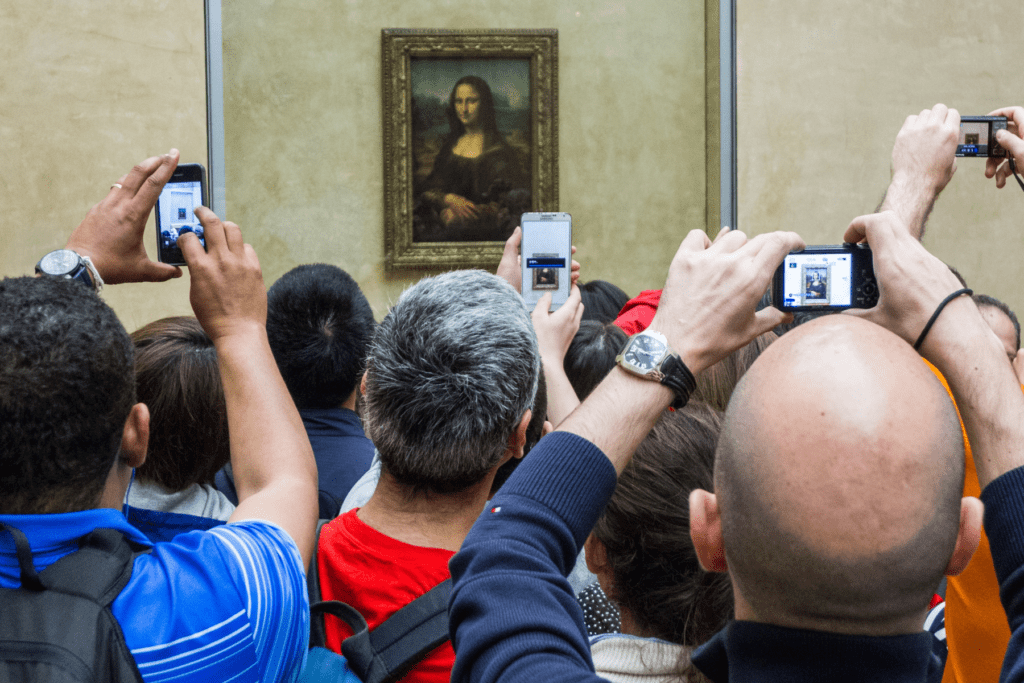
Mona Lisa
If your teens are like mine, no plan for the Louvre can be complete without a stop at this painting. They were aware that it is somewhat unimpressive in person, but you still have to see it! Painted by Leonardo da Vinci in the early 16th century, the Mona Lisa is the most famous painting in the world. The woman with the enigmatic smile is believed to be Lisa Gherardini, the wife a Florentine merchant. The painting attracts a crowd and is in the Salle des États, the Louvre’s largest room. It is located in Denon Wing, Level 1, Room 711.
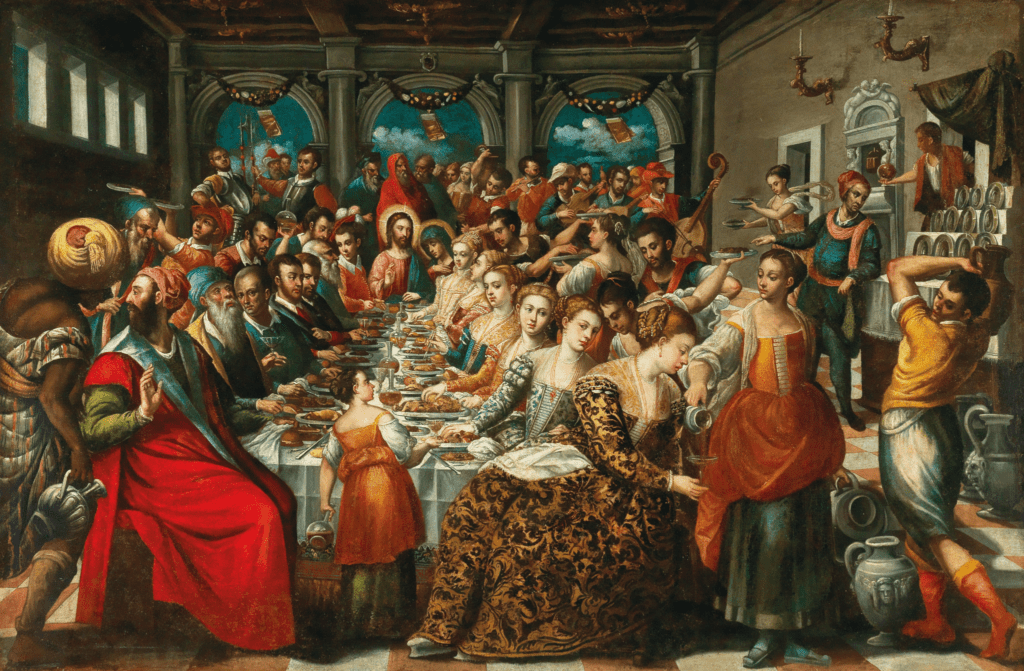
Wedding Feast at Cana
In the same room is the Wedding Feast at Cana by Italian Renaissance artist Paolo Veronese in 1563. This is the largest painting in the Louvre measuring 32.6 x 22 feet. The painting is of the wedding feast where Jesus performed his first miracle, turning water into wine.
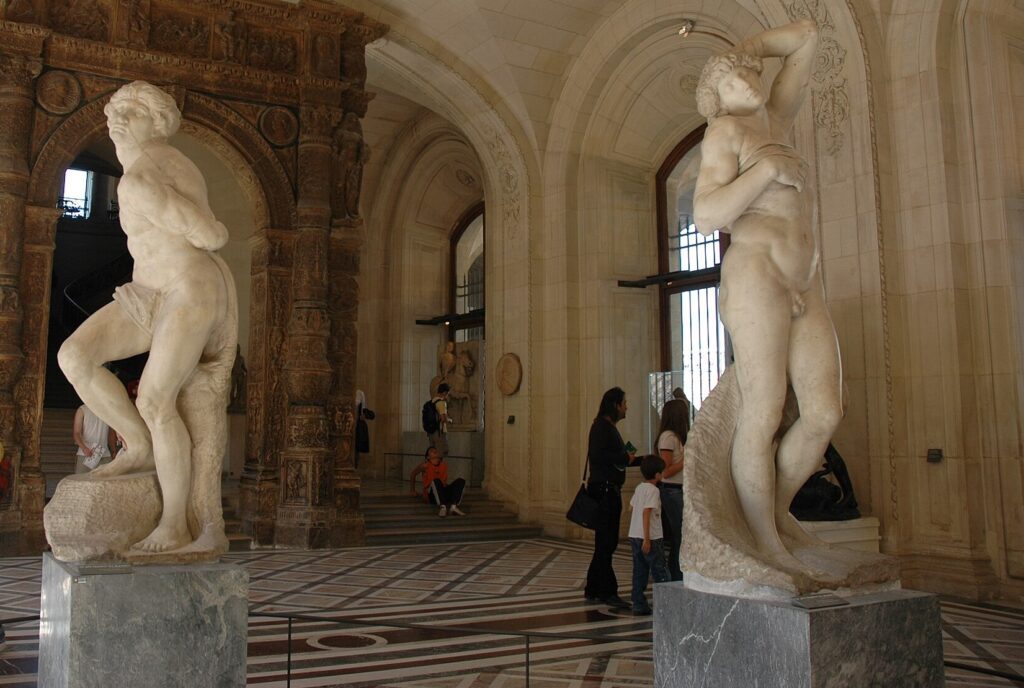
Michaelangelo Gallery
Large windows flank this gallery in Denon Wing, Level 0, Room 403, and fill it with natural light to better see the masterpieces on display. The sculpture is all Italian dating from the 16th to 19th century. Some highlights are Michelangelo’s Dying Slave and Rebellious Slave marble sculptures dating from the early 16th century. These were originally for the the tomb of Pope Julius II but were instead given to the King of France. They are prime examples of High Renaissance style with a focus on human anatomy, idealized forms, and harmonious balance.
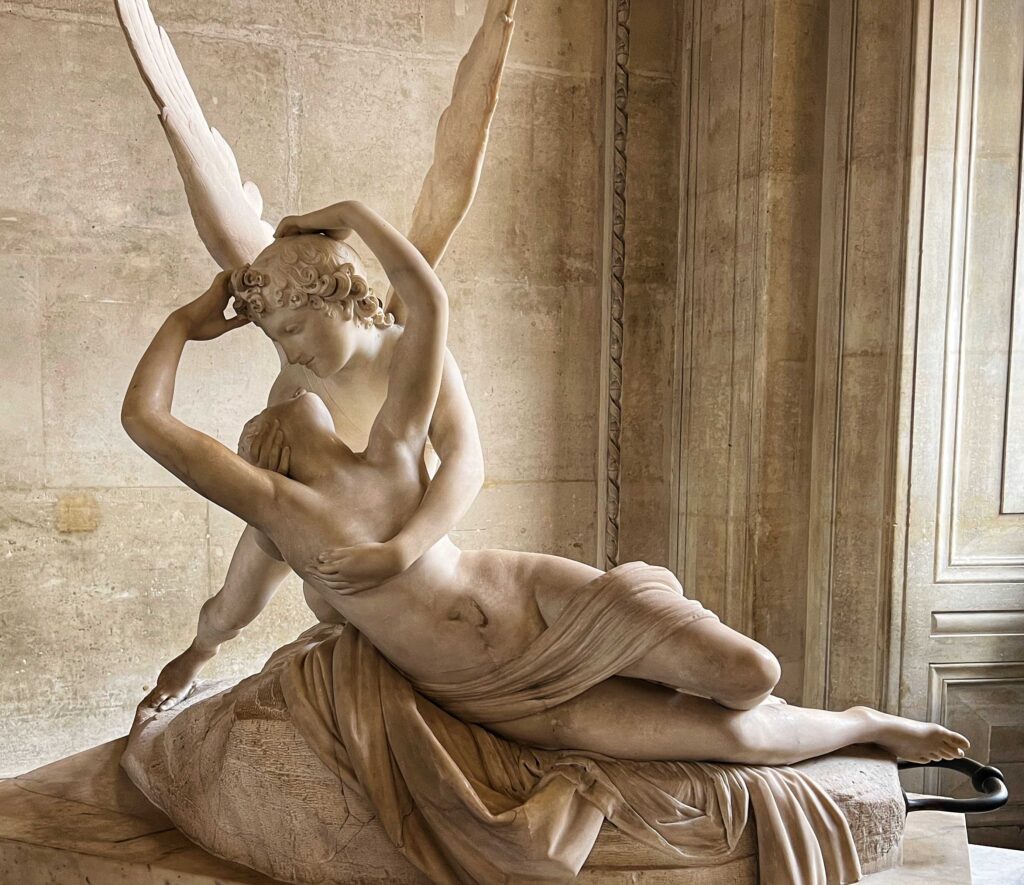
The gallery also displays Psyche Revived by Cupid’s Kiss by Italian Neoclassical artist Antonio Canova. Dating from 1793, the marble sculpture shows Cupid reviving a mortal princess named Psyche with a kiss. It’s an example of Neoclassical art that emphasizes classic forms, harmonious composition, and a return to the ideals of ancient Greek and Roman art.
Sully Wing
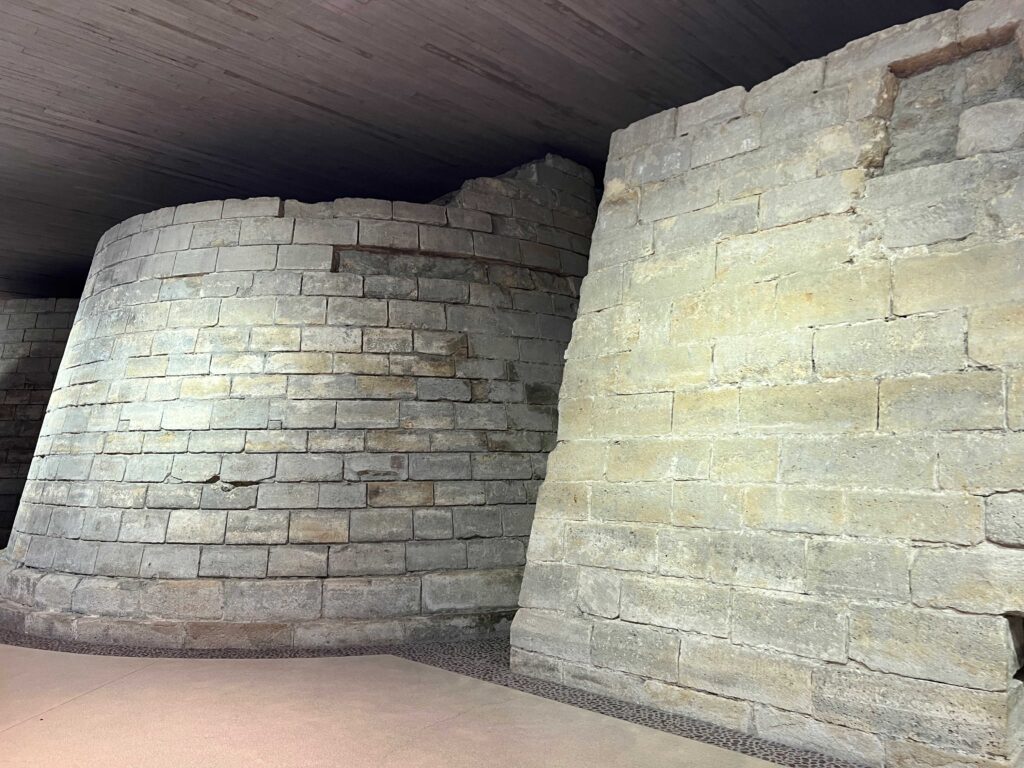
Medieval Louvre
One of the most fascinating things about the Louvre is that it was once a 12th century fortress that eventually became a royal palace. During the French revolution, it became a museum in 1793. The building still features many of the architectural elements. In the basement in the Sully Wing (Level -1 and -2), you can still see the remains of the medieval dungeon, moat, and walls.
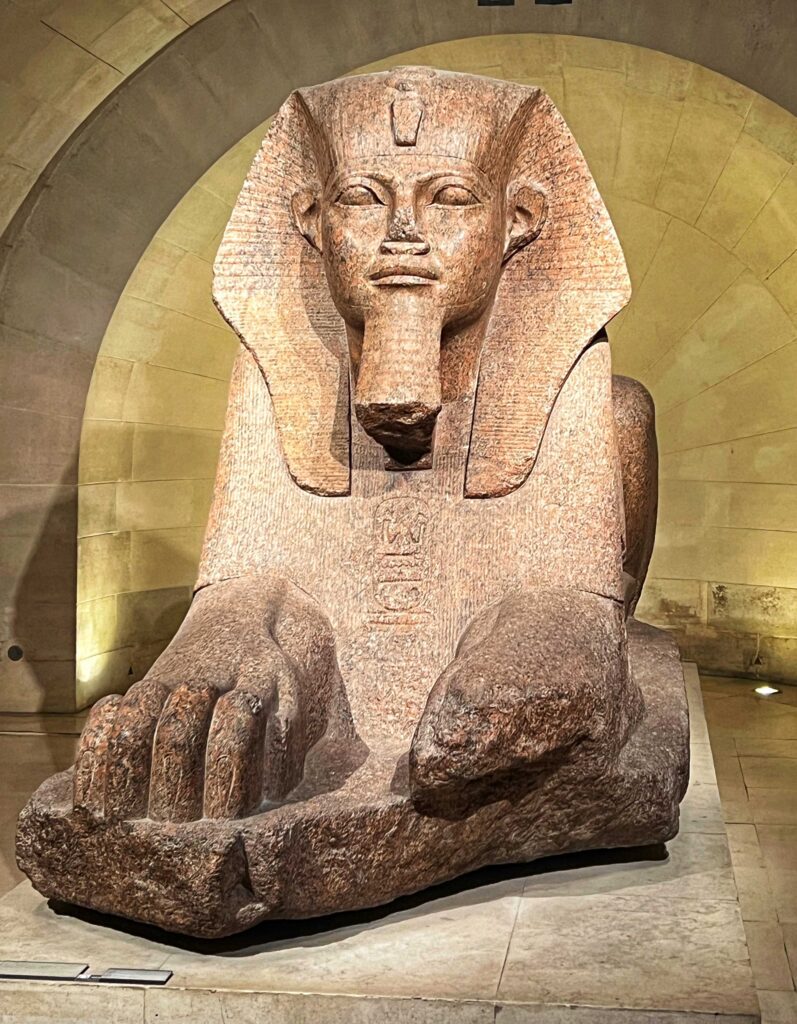
Great Sphinx of Tanis
The Louvre has an extensive collection of ancient Egyptian artifacts, and many teens would prefer spending all of their time exploring that area. If so, that’s great! Better to lean into their interests than drag them from room to room seeing paintings of stuff they won’t appreciate. But if your teen isn’t particularly into Egypt, just stop by to see this magnificent granite sculpture of a sphinx that dates from 1070-712 BCE. It is in the Sully Wing, Level -1, Room 338.
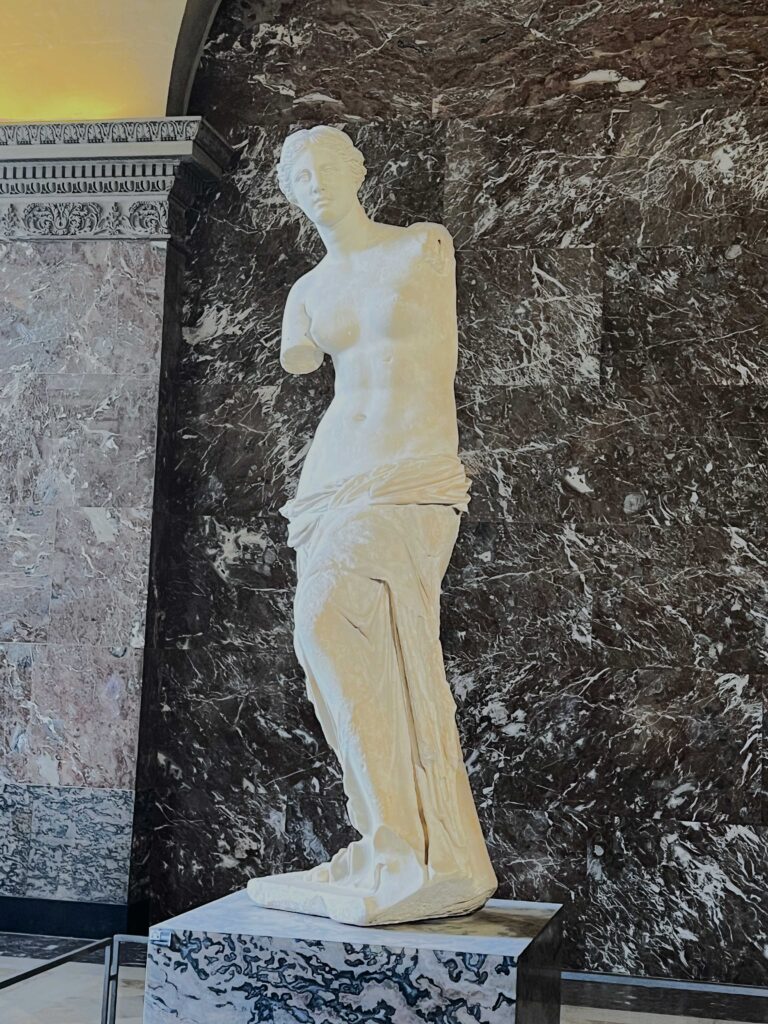
Venus de Milo
This is another masterpiece that your teens will recognize and should be part of your Louvre plan. The Venus de Milo is a marble statue that depicts the goddess Aphrodite. A prime example of Hellenistic sculpture, it was probably created between 130-100 BCE and it’s sculptor is unknown. It was found on the island of Milos in the Aegean Sea and is believed have been in a temple dedicated to Aphrodite on the island. Art historians debate about the original position of the sculptures’ missing arms, but no consensus exists. It is located in Sully Wing, Level 0, Room 345.

Sleeping Hermaphrodite
This marble sculpture shows a feminine figure with male genitals representing the Greek God Hermaphroditus. It dates from the 2nd century BCE and is representative of the Hellenistic period. It’s located in Sully Wing, Level 0, Room 348.
Richelieu Wing
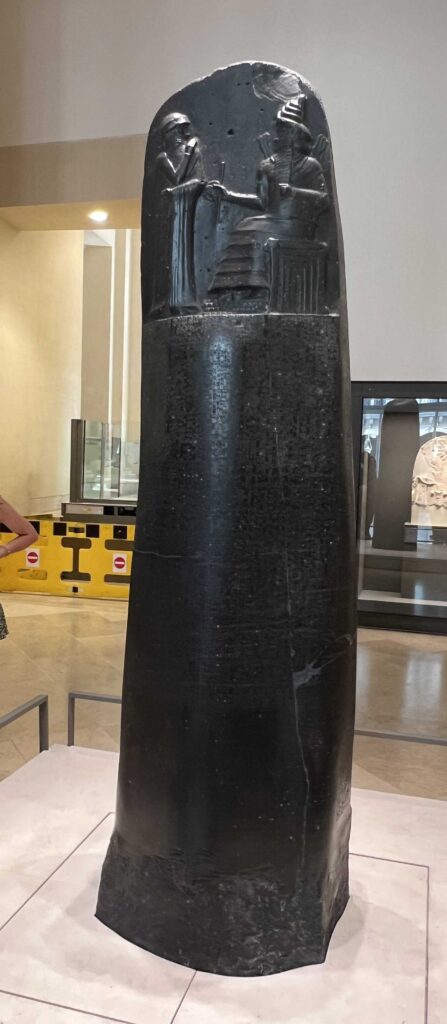
Law Code of Hammurabi
This ancient stone stelea from ancient Babylon is the oldest known legal codes in human history. Hammurabi, the sixth king of Babylon, established these codes in the late 1700s BCE. The inscription in cuneiform script covers 282 property rights, family law, and criminal justice laws. Some principles covered in the laws include the concept of “an eye for an eye,” or punishment equal to the offense, and hierarchical social structure with different punishments according to social status and gender. The stele is in the Richelieu Wing, Level 0, room 227.
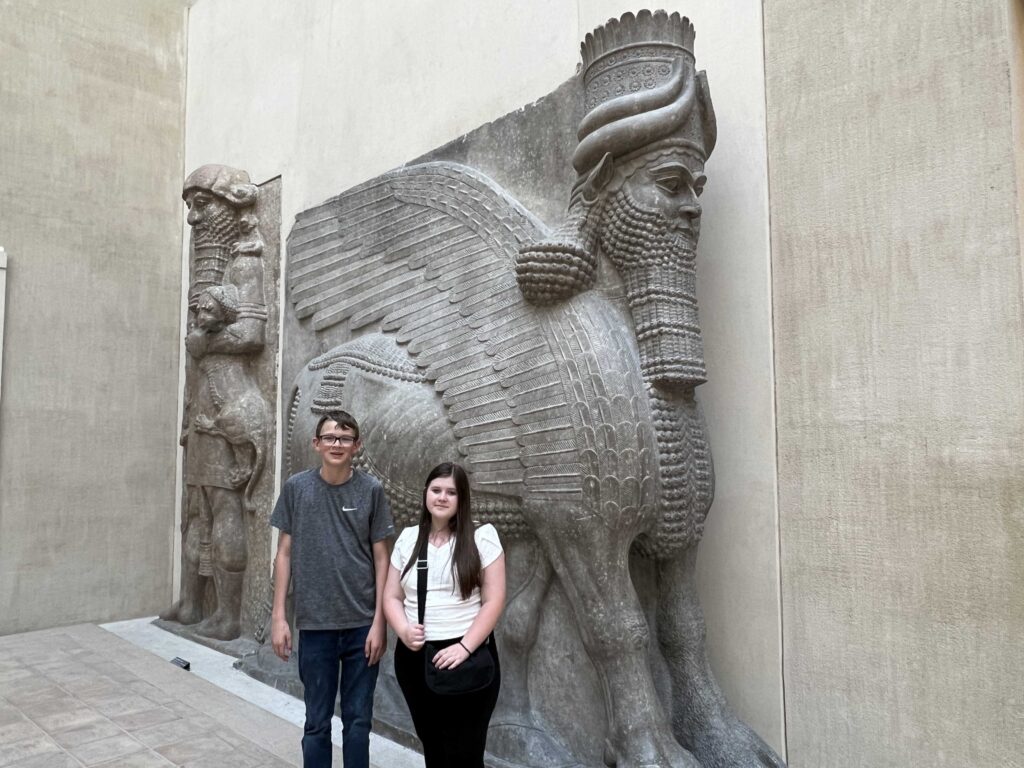
Winged Human-Headed Bull
Take the body of a bull, the wings of an eagle, and the head of a man and you get the Winged Human-Headed Bull! These Assyrian stone sculptures are of unknown age but were sculpted somewhere from 2500-609 BCE. These sculptures and others like them stood at the entrances of palaces, temples, and city gates to ward off evil spirits. Several examples are in the Richelieu Wing, Level 0, room 229.

Statue of Ebih-II
This life-size gypsum statue depicts Ebih-II, an important official in the ancient city-state of Mari that is now in Syria. Dating from 25th century BCE. This statue provides insights about the historical and cultural elements of Mesopotamian society. The statue is in the Richelieu Wing, Level 0, room 234.

Napoléon III Apartments & Louvre’s Decorative Arts Section
If your teen loves opulence, make sure the Napoléon Apartments are on your Louvre plan! The entire Louvre will be a feast for their eyes, but the Napoléon Apartments are particularly impressive. The drawing and dining rooms feature an amazing amount of gold leaf, red velvet, portraits of Napoléon III and Empress Eugénie, and fantastic artifacts. The Napoléon Apartments are in the Richelieu Wing, Level 1, rooms 544 and 547.
You can also find the Department of Decorative Arts on the entire second floor of the Richelieu Wing and part of the Sully wing. Anyone who loves antiques, historic homes, palaces, and anything fancy will love wandering through these fantastically decorated rooms.
One issue you may run into is that they will close the Napoléon Apartments on extremely hot days. So if you arrive later in the day in the summer, you may not be able to see these rooms. But the other rooms in the Decorative Arts Department should be open.

Louvre Plan
Now that you know what to see in the Louvre, here’s a plan to fit it all in without doing a lot of backtracking. The Louvre is U-shaped. In the middle of the U is a courtyard with the famous glass pyramid. The pyramid is flanked by the Denon and Richelieu wings. The bottom of the U is the Sully wing. It’s worth spending a bit of time with the interactive map on the website before you go. But to make things easier, I’ve included screenshots with the must-see items marked below.
General Louvre Plan
If you aren’t arriving first thing in the morning, my suggestion is to just start in whatever wing you first see when you enter. Go up and down the level of that wing to see everything before going to the next wing.
Denon Wing, Level 1
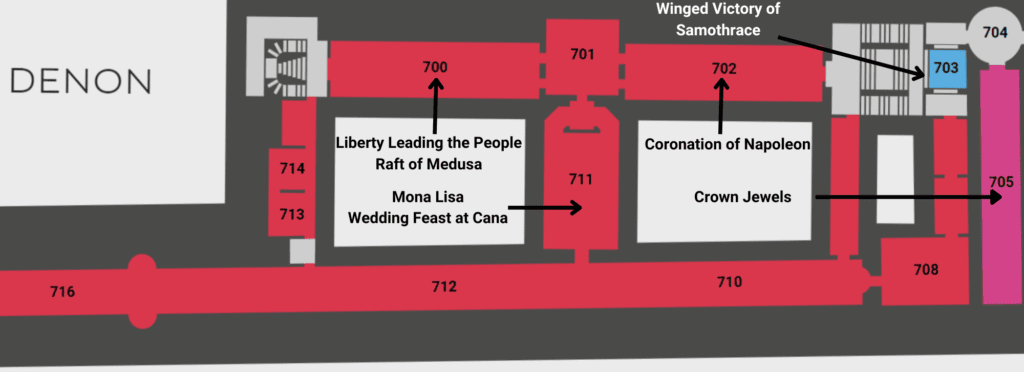
Denon Wing, Level 0

Sully Wing, Level -1 & -2
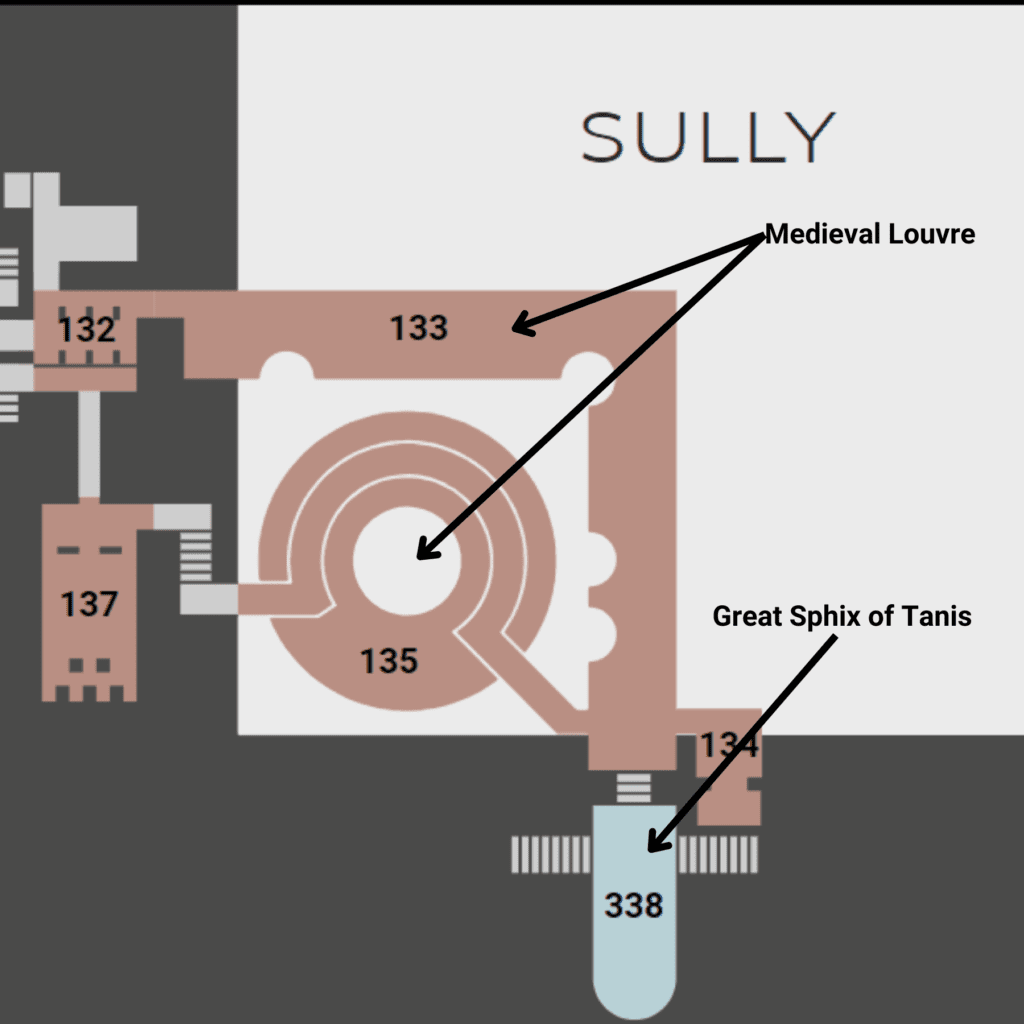
Sully Wing Level 0
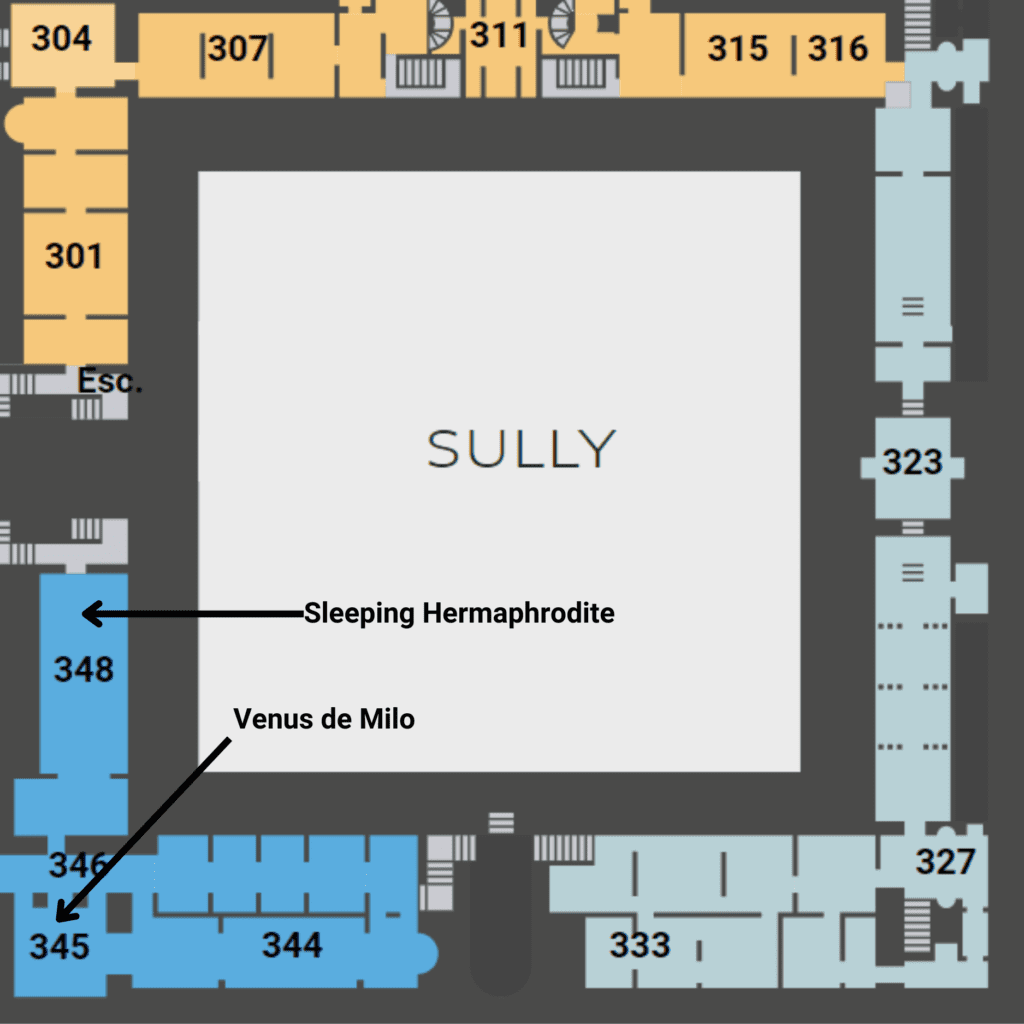
Richelieu Wing, Level 0

Richelieu Wing, Level 1
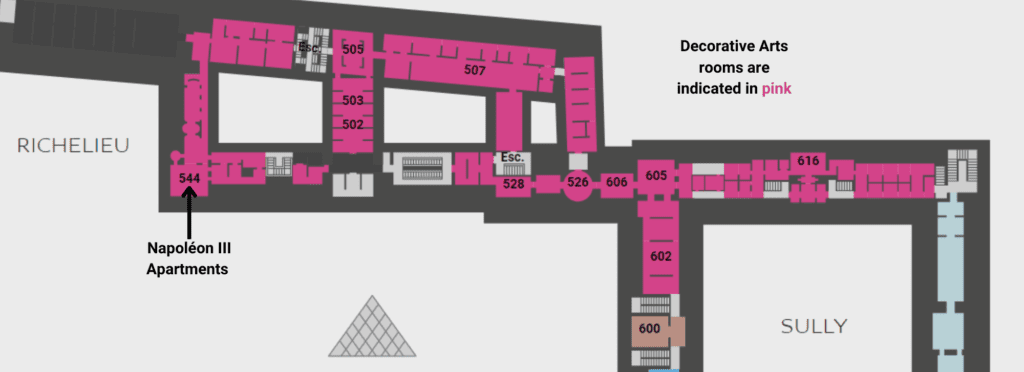
9 a.m. Louvre plan
If you enter the Louvre with pre-purchased 9 a.m. tickets, go directly to the Mona Lisa in the Denon Wing Level 1, Room 711. There’s a lot of signage to help you get there, and you likely will just be able to follow the crowd. Once you get to the room, you can see the painting from afar without standing in line. Or you can stand in the line and get a closer look. But it’s not like a character at Disney World where standing in line will get you a few minutes of individual time with the painting. Once you are at the front of the line, you will be there with a ton of other people. The good news is that this makes the line go pretty fast.

Other Plans to Tackle the Louvre
You may read all of this and still think your teen won’t be into the Louvre. Don’t worry – there are other Louvre plans to capture your teen’s imagination! Here are a few ideas:
- Take a guided tour – a good tour guide can entertain kids much better than mom reading notes off her iPhone (don’t ask me how I know)!
- Go on a family treasure hunt – solve a mystery while visiting all of the masterpieces; this is a great option for families with younger kids.
- Go on a scavenger hunt – pretend like you are Robert Langdon in the Da Vinci Code running around the Louvre to decipher hidden messages and clues!
- Choose one section of the Louvre and dive deep – if your kids have specialized interests, just stick to one department: Near Eastern Antiquities; Egyptian Antiquities; Greek, Etruscan and Roman Antiquities; Islamic Art; Decorative Arts; Sculptures; Paintings; Prints and Drawings; Byzantine and Eastern Christian Art.
- Choose another art museum – if your kids aren’t interested in older art, they might enjoy Musée d’Orsay (19th and early 20th century Impressionist and Post-Impressionist art) or the Centre Pompidou (modern art).

Louvre Tips
Here are some final tips to make your Louvre visit a success:
- There’s no dress code for the Louvre, so you can wear anything. Comfy shoes are a must. And don’t expect terrific climate control. We were there during an evening in June and it was incredibly hot. And it might be overheated in winter, so layers are your friend. There are self-service lockers available to store your winter coat and other items.
- There are restaurants and cafes available on site, but you can also bring your own snacks and water. You can’t eat in the exhibit rooms, but you can eat in the central hall. If you are visiting on a Friday night and choose to eat at one of the restaurants at the Louvre, make sure to check closing times.
- Be aware that pickpockets sometimes roam the Louvre. And if someone asks you for your email or a donation, walk away as it is likely a scam.
- Your Louvre entrance ticket includes access to the Musée National Eugène-Delacroix within 48 hours of your Louvre visit. And don’t forget to visit the Tuileries Gardens during your visit to the Louvre. You can rent little boats to float on the Grand Basin and ride the carrousel. Kids can also enjoy a nice play area and jump on trampolines!
- Not every room in the Louvre is open on every day the museum is open. If you or your teen have your heart set on seeing something in particular, check the schedule of room closures in advance.
What’s on your Louvre plan?
Tell us below! And don’t miss our other posts on Paris:



Pingback: 5 Exciting Days in Paris with Teens - Extravelgance